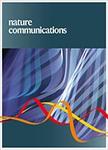版权所有:内蒙古大学图书馆 技术提供:维普资讯• 智图
内蒙古自治区呼和浩特市赛罕区大学西街235号 邮编: 010021

作者机构:IBM Res Europe Zurich Ruschlikon Switzerland Graz Univ Technol Inst Machine Learning & Neural Computat Graz Austria Univ Seville SCORE Lab EPS Robot & Technol Comp ETSII Seville Spain
出 版 物:《NATURE COMMUNICATIONS》 (Nat. Commun.)
年 卷 期:2025年第16卷第1期
页 面:1-16页
核心收录:
基 金:CHIST-ERA grant MCIN/AEI [PCI2019-111841-2] Swiss National Science Foundation (SNSF) [20CH21_186999 / 1] US National Science Foundation (NSF) EFRI grant European Union Spanish Ministry of Education, Culture, and Sports [FPU19/04597] Austrian Science Fund (FWF) CHIST-ERA-18-ACAI-004 Swiss National Science Foundation (SNF) [20CH21_186999] Funding Source: Swiss National Science Foundation (SNF)
摘 要:There is a growing demand for low-power, autonomously learning artificial intelligence (AI) systems that can be applied at the edge and rapidly adapt to the specific situation at deployment site. However, current AI models struggle in such scenarios, often requiring extensive fine-tuning, computational resources, and data. In contrast, humans can effortlessly adjust to new tasks by transferring knowledge from related ones. The concept of learning-to-learn (L2L) mimics this process and enables AI models to rapidly adapt with only little computational effort and data. In-memory computing neuromorphic hardware (NMHW) is inspired by the brain s operating principles and mimics its physical co-location of memory and compute. In this work, we pair L2L with in-memory computing NMHW based on phase-change memory devices to build efficient AI models that can rapidly adapt to new tasks. We demonstrate the versatility of our approach in two scenarios: a convolutional neural network performing image classification and a biologically-inspired spiking neural network generating motor commands for a real robotic arm. Both models rapidly learn with few parameter updates. Deployed on the NMHW, they perform on-par with their software equivalents. Moreover, meta-training of these models can be performed in software with high-precision, alleviating the need for accurate hardware models.